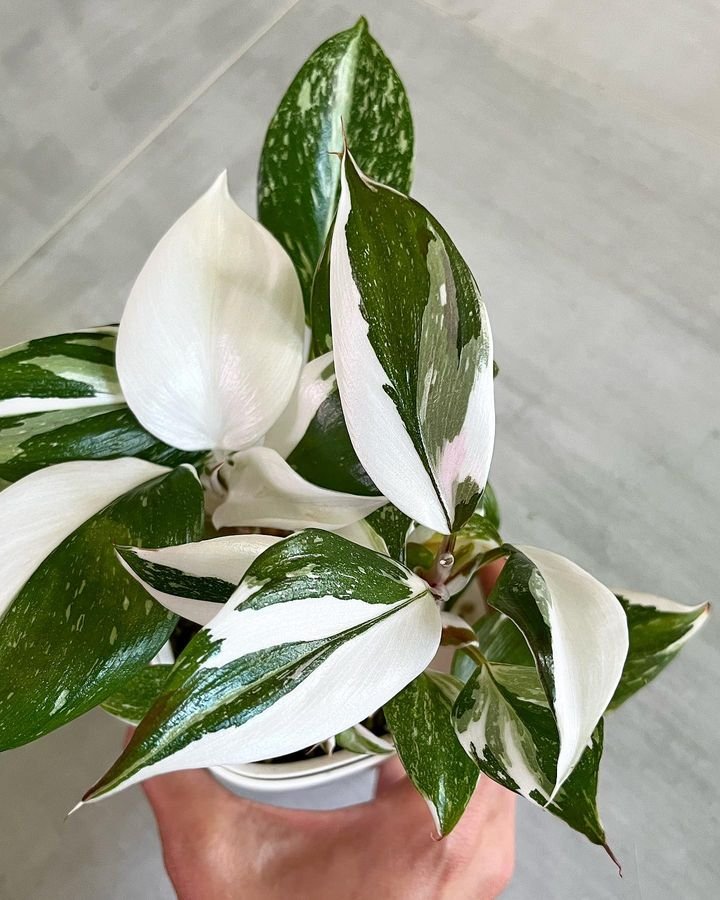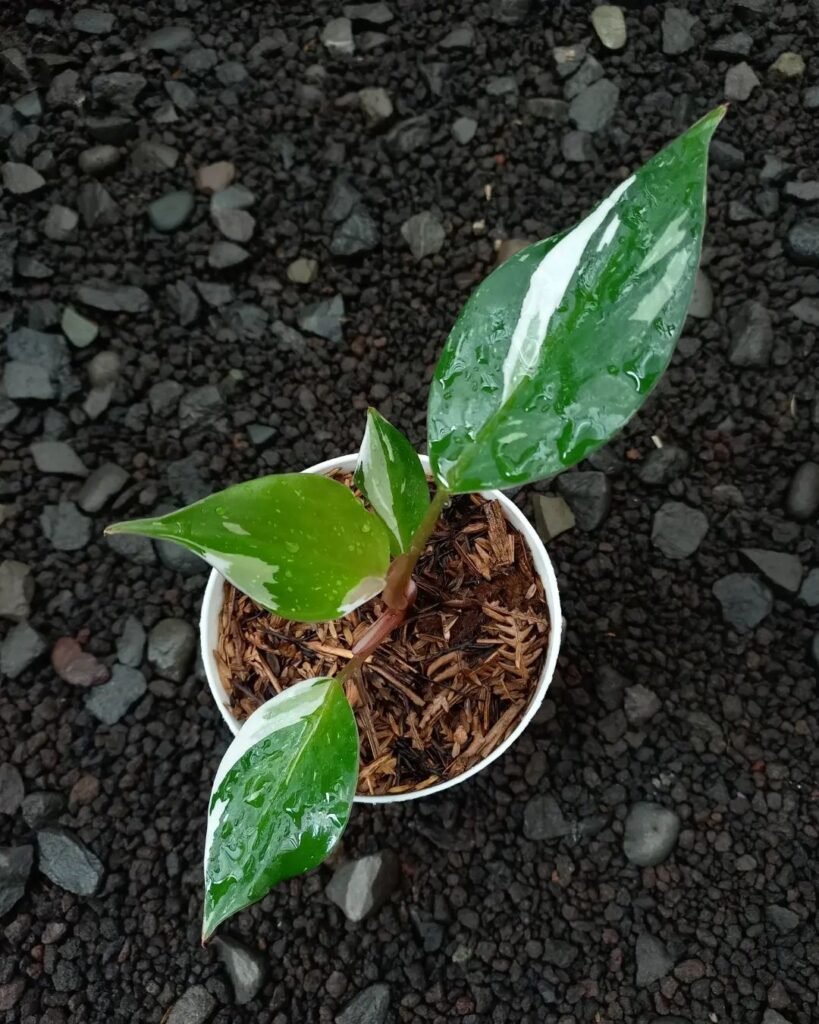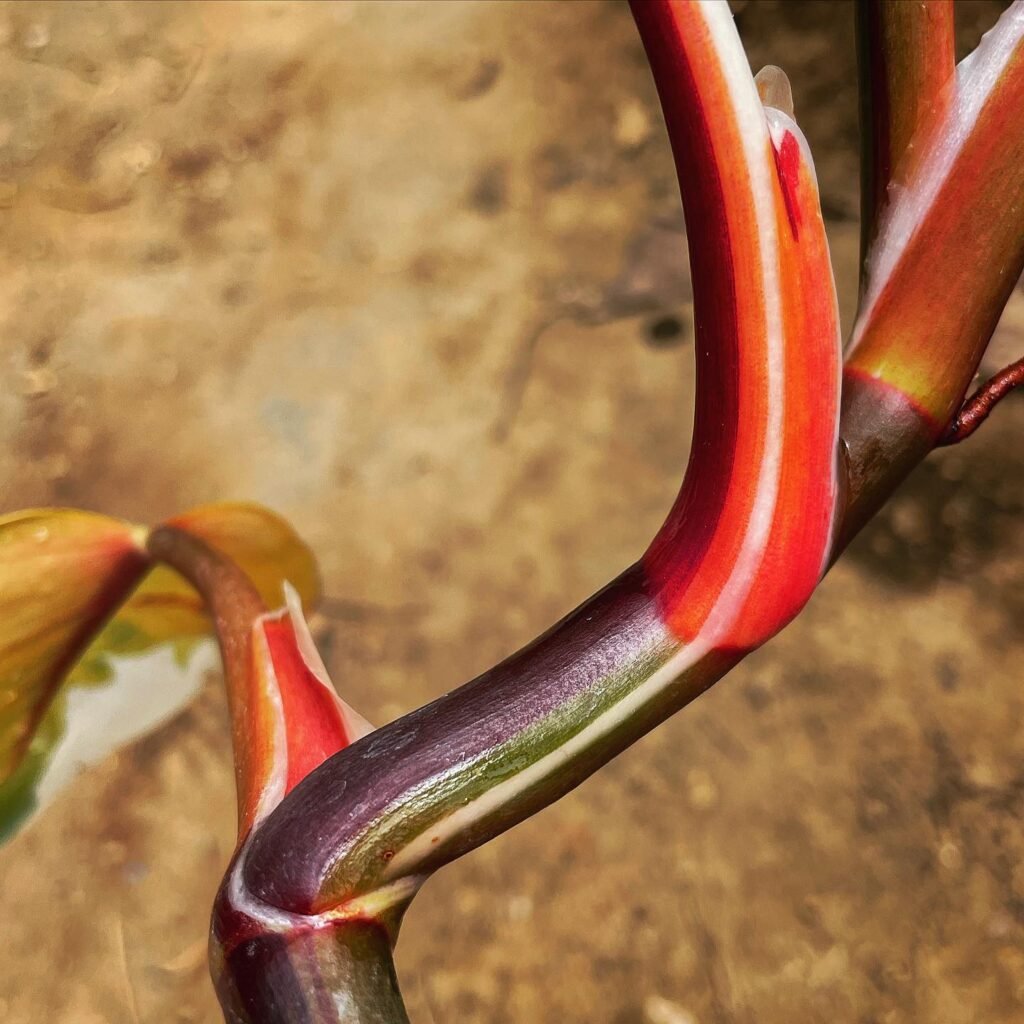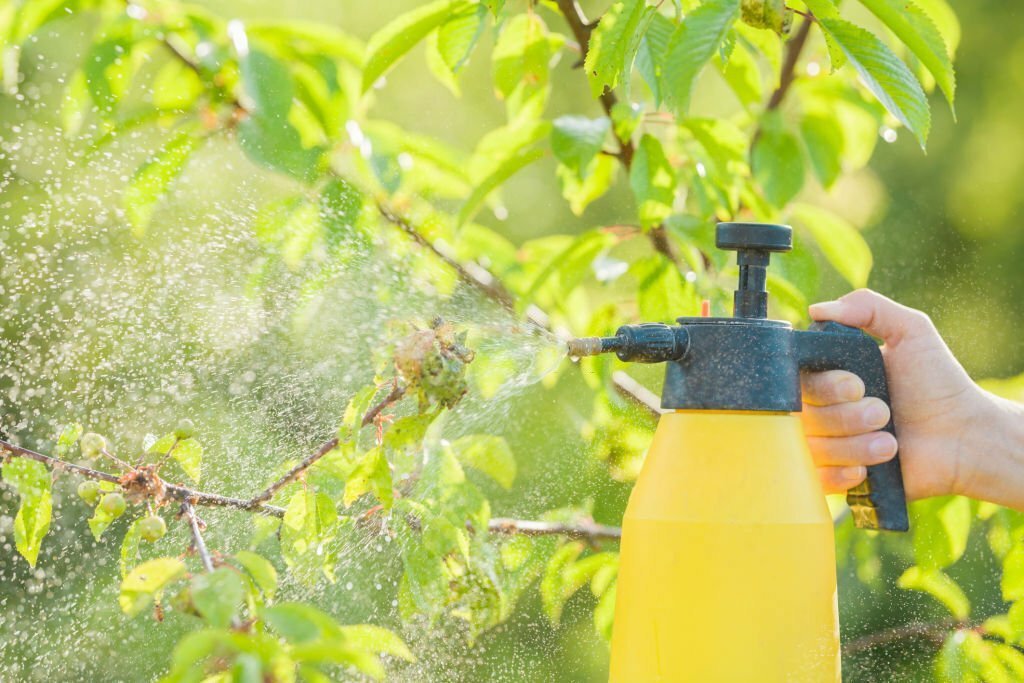Table of Contents
Philodendron White Knight Care Guide: How to Grow and Propagate This Gorgeous Plant
If you are looking for a stunning and rare indoor plant, you might want to consider the Philodendron White Knight. This plant has beautiful white and green variegated leaves that will add a touch of elegance to any space. But how do you properly care for this plant and keep its variegation? In this article, we will provide you with the ultimate Philodendron White Knight care guide, covering everything from water needs, light preferences, soil types, fertilizing tips, propagation techniques, common problems, and more. By the end of this article, you will be able to grow and care for your Philodendron White Knight like a pro.
Introduction to White Knight Philodendron
| Aspect | White Knight Philodendron |
|---|---|
| Scientific Name | Philodendron sp. ‘White Knight’ |
| Family | Araceae |
| Growth Type | Climbing plant |
| Maximum Height | Up to 6 feet tall (with support) |
| Foliage Characteristics | Green leaves with white variegation (varying from leaf to leaf) |
| Common Names | White Knight Philodendron, Philodendron ‘White Knight’ |
What’s Philodendron White Knight?
A Philodendron White Knight is a variegated plant that has white and green leaves. The white variegation is caused by a mutation in the plant’s genes that affects the production of chlorophyll, the pigment that gives plants their green color. Chlorophyll is essential for photosynthesis, the process by which plants convert light into energy. Therefore, variegated plants have less chlorophyll and less ability to perform photosynthesis than non-variegated plants. This means that they need more light and less water than their green counterparts.
Rarity of the Philodendron White Knight
The Philodendron White Knight is a rare plant that is not easy to find in nurseries or online shops. This is because it is a hybrid plant that was created by crossing two different species of philodendrons, one of which is also rare and hard to obtain. The exact origin and parentage of the Philodendron White Knight are unknown, but some sources suggest that it was developed in Thailand or Indonesia. The rarity of this plant also makes it more expensive than other philodendrons, so be prepared to pay a premium price if you want to add this beauty to your collection.

The White Knight and White Princess: Differences
The Philodendron White Knight is often confused with another similar-looking plant, the Philodendron White Princess. Both plants have white and green variegated leaves, but there are some subtle differences between them. The main difference is that the White Knight has reddish stems and petioles (the stalks that attach the leaves to the stems), while the White Princess has green stems and petioles. Another difference is that the White Knight has more elongated and pointed leaves, while the White Princess has more rounded and heart-shaped leaves. Additionally, the White Knight tends to have more white variegation than the White Princess, which has more green leaves with white markings.
Necessities for Philodendron White Knight Care
The Philodendron White Knight is not a very difficult plant to care for, but it does have some specific requirements that you need to meet in order to keep it healthy and happy. Here are some of the most important factors that you need to consider when caring for your Philodendron White Knight:

Water Needs for White Knight Philodendron
The White Knight Philodendron likes a moist soil, but not soggy or wet. Over-watering can cause root rot and fungal infections, which can kill your plant. Under-watering can cause your plant to wilt and lose its variegation. To avoid these problems, you need to water your Philodendron White Knight when the top 1-2 inches of soil feel dry to the touch. You can use your finger or a moisture meter to check the soil moisture level. When watering, make sure to water thoroughly until water drains out of the drainage holes of the pot. Do not let your plant sit in water for too long, as this can also cause root rot.
Importance of Light
Light is one of the most crucial factors for maintaining the variegation of your Philodendron White Knight. This plant needs bright indirect light to thrive and produce more white variegation on its leaves. However, it cannot tolerate direct sunlight, as this can scorch and burn its delicate foliage. The best place to put your Philodendron White Knight is near a window that receives plenty of natural light, but is shaded by a sheer curtain or a blind. Also artificial lights can be used, such as fluorescent or LED lamps, to supplement the natural light if needed. You should avoid placing your plant in a dark or shady spot, as this can cause it to lose its variegation and turn green.
Temperature and Humidity Preferences
The White Knight Philodendron is a tropical plant that prefers warm and humid conditions. The ideal temperature range for this plant is between 65°F and 85°F (18°C and 29°C). It can tolerate temperatures as low as 50°F (10°C), but it will not grow well and may suffer from cold damage. It cannot survive temperatures below 40°F (4°C), as this can cause frostbite and death. You should keep your Philodendron White Knight away from drafts, air conditioners, heaters, and fireplaces, as these can cause sudden temperature changes and stress your plant.
The Philodendron White Knight also likes high humidity levels, around 60% or more. This mimics the humid environment of its native habitat in the rainforests. Low humidity can cause your plant to dry out and develop brown leaf tips and edges. To increase the humidity around your plant, you can use a humidifier, a pebble tray, a misting bottle, or group it with other plants. You should mist your plant regularly, especially during the dry winter months, to keep its leaves hydrated and prevent dust accumulation.

Best Soil Conditions for Philodendron White Knight
The Philodendron White Knight needs well-draining soil that is rich in organic matter and nutrients. A better potting mix for this plant is the one containing peat moss, perlite, vermiculite, and compost. You can also add some bark, charcoal, or coco coir to improve the drainage and aeration of the soil. You should avoid using soil that is too heavy, compacted, or clayey, as this can retain too much water and cause root rot. You should also avoid using soil that is too sandy, alkaline, or salty, as this can deprive your plant of essential nutrients and minerals.
Practical Fertilizing Tips
The Philodendron White Knight is a fast-growing plant that needs regular fertilizing to support its growth and variegation. It should be fertilized once every two weeks during the active growing season (spring and summer) with a balanced liquid fertilizer diluted to half-strength. You can also use organic fertilizers, such as worm castings, compost tea, or fish emulsion, to provide your plant with natural nutrients and beneficial microbes. You should avoid over-fertilizing your plant, as this can cause fertilizer burn and damage its roots and leaves. You should also stop fertilizing your plant during the dormant season (fall and winter), as this can cause it to grow leggy and weak.
How to Propagate White Knight Philodendron
The Philodendron White Knight is an easy plant to propagate by using stem cuttings. This method allows you to create new plants from your existing one and share them with your friends or family. Here are the steps to follow for propagating your Philodendron White Knight by stem cuttings:
Propagation through Stem Cuttings
- Choose a healthy stem that has at least one node (the point where the leaf attaches to the stem) and one leaf.
- Cut the stem below the node with a sharp and sterile knife or scissors.
- Remove any lower leaves from the cutting, leaving only one or two leaves at the top.
- Dip the cut end of the stem in rooting hormone powder or gel (optional) to speed up the rooting process.
- Place the cutting in a small pot filled with moist potting soil or in a glass of water.
- Keep the cutting in a warm and bright spot, but away from direct sunlight.
- Keep the soil or water moist, but not soggy.
- Wait for roots to develop in 2-4 weeks.
- Once the roots are about 2 inches long, you can transplant the cutting into a larger pot with fresh potting soil.
- Water the new plant well and place it in its permanent location.
Exploiting the Variegation in White Knight during Propagation
If you want to increase the variegation in your Philodendron White Knight during propagation, you can use some tricks to manipulate the genetics of your plant. One way is to choose stem cuttings that have more white variegation than green on their leaves. This will increase the chances of producing more white variegated leaves on the new plants. Another way is to expose your cuttings to more light than usual during the rooting process. This will stimulate the production of more chlorophyll in the green parts of the leaves, creating more contrast with the white parts. However, you should be careful not to expose your cuttings to too much light, as this can also burn and damage them.
Identifying and Solving Common White Knight Philodendron Issues
The Philodendron White Knight is a relatively easy plant to care for, but it can still encounter some issues that can affect its health and appearance. Here are some of the most common problems that you may face with your Philodendron White Knight and how to solve them:

Why Is My White Knight Turning Yellow?
One of the most common issues that you may notice with your Philodendron White Knight is yellowing leaves. This can be caused by several factors, such as:
- Over-watering: If you water your plant too often or too much, you can cause root rot and fungal infections, which can prevent your plant from absorbing water and nutrients properly. This can lead to yellowing and wilting of the leaves. To prevent this, you should water your plant only when the top 1-2 inches of soil feel dry to the touch and make sure that the excess water drains out of the pot.
- Under-watering: If you water your plant too little or too infrequently, you can cause your plant to dehydrate and stress out. This can also lead to yellowing and wilting of the leaves. To prevent this, you should water your plant regularly and thoroughly, keeping the soil moist but not soggy.
- Too much light: If you expose your plant to direct sunlight or artificial light that is too bright or too hot, you can cause sunburn and scorching of the leaves. This can result in yellowing and browning of the leaf edges and tips. To prevent this, you should place your plant in a spot that receives bright indirect light, but is protected from direct sun rays.
- Nutrient deficiency: If you do not fertilize your plant enough or use a fertilizer that is not suitable for your plant, you can cause nutrient deficiency in your plant. This can affect the color and growth of your leaves, making them turn yellow or pale. To prevent this, you should fertilize your plant once every two weeks during the growing season with a balanced liquid fertilizer diluted to half-strength. You should also use a well-draining soil that is rich in organic matter and nutrients.
Dealing with Brown Leaves Tips
Another common issue that you may encounter with your Philodendron White Knight is brown leaf tips or edges. This can be caused by several factors, such as:
- Low humidity: If the air around your plant is too dry, it can cause your plant to lose moisture through its leaves faster than it can absorb it through its roots. This can result in brown leaf tips or edges, especially on the white variegated parts of the leaves. To prevent this, you should increase the humidity around your plant by using a humidifier, a pebble tray, a misting bottle, or grouping it with other plants. You should also mist your plant regularly to keep its leaves hydrated.
- Over-fertilizing: If you fertilize your plant too much or too often, you can cause fertilizer burn and damage its roots and leaves. This can result in brown leaf tips or edges, as well as yellowing and wilting of the leaves. To prevent this, you should fertilize your plant only once every two weeks during the growing season with a balanced liquid fertilizer diluted to half-strength. You should also flush the soil with water once a month to remove any excess salts or minerals from the fertilizer.
- Water quality: If you use tap water that is too hard or too soft, or has high levels of chlorine or fluoride, you can cause chemical damage to your plant’s roots and leaves. This can result in brown leaf tips or edges, as well as yellowing and wilting of the leaves. To prevent this, you should use filtered water, rainwater, or distilled water to water your plant. You should also let the water sit for 24 hours before using it to allow any chlorine or fluoride to evaporate.
Identifying and Battling Pests and Diseases
The Philodendron White Knight is not very prone to pests and diseases, but it can still be attacked by some common culprits, such as:

- Spider mites: These are tiny red or brown spiders that suck the sap from your plant’s leaves, causing them to turn yellow, brown, or gray. They also leave behind fine webs on the underside of the leaves. To get rid of them, you should spray your plant with insecticidal soap or neem oil every week until they are gone. You should also wipe the leaves with a damp cloth or cotton swab to remove any webs or eggs.
- Mealybugs: These are small white bugs that look like cotton balls that feed on your plant’s sap, causing them to turn yellow and drop off. They also secrete a sticky substance called honeydew that attracts ants and fungus. To get rid of them, you should dab them with alcohol or insecticidal soap using a cotton swab or a toothbrush. You should also wash your plant with water to remove any honeydew or fungus.
- Scale insects: These are small brown or black bugs that look like scales that attach themselves to your plant’s stems and leaves, sucking their sap and weakening them. They also secrete honeydew that attracts ants and fungus. To get rid of them, you should scrape them off with your fingernail or a toothpick, or spray them with alcohol or insecticidal soap. You should also wash your plant with water to remove any honeydew or fungus.
White Knight Toxicity For Pet Owners
The Philodendron White Knight is a toxic plant that contains calcium oxalate crystals in its leaves and stems. These crystals can cause irritation and swelling of the mouth, throat, and digestive tract if ingested by humans or animals. They can also cause difficulty breathing, drooling, vomiting, diarrhea, and kidney failure in severe cases. Therefore, you should keep this plant away from children and pets, especially cats and dogs that like to chew on plants. If you suspect that your child or pet has ingested any part of this plant, you should contact your doctor or veterinarian immediately.
Understanding White Knight Toxicity
The Philodendron White Knight is toxic because of the calcium oxalate crystals that are present in its leaves and stems. These crystals are sharp and needle-like, and they can pierce the soft tissues of the mouth, throat, and digestive tract when ingested. This can cause pain, inflammation, and bleeding in the affected areas. The crystals can also block the airways and prevent oxygen from reaching the lungs, causing difficulty breathing and suffocation. The crystals can also damage the kidneys by forming stones or crystals in the urinary tract, causing kidney failure.
How to Manage White Knight Philodendron with Pets
If you have pets that like to nibble on plants, you should be careful with your Philodendron White Knight. Here are some tips to manage this plant with pets:
- Place your plant in a high or inaccessible spot where your pets cannot reach it.
- Use a hanging basket or a trellis to keep your plant off the ground.
- Cover your plant with a mesh or a net to prevent your pets from getting close to it.
- Spray your plant with a bitter or spicy substance that will deter your pets from biting it.
- Train your pets to avoid your plant by using positive reinforcement or negative feedback.
- Provide your pets with safe and edible plants that they can chew on instead of your Philodendron White Knight.
Frequently Asked Questions About Philodendron White Knight Care
How to Increase Variegation in White Knight?
The variegation in the Philodendron White Knight is determined by its genetics, but it can also be influenced by environmental factors such as light, temperature, and nutrition. To increase the variegation in your Philodendron White Knight, you should:
- Provide it with bright indirect light, but avoid direct sunlight.
- Keep it in a warm and humid environment, but avoid extreme temperatures.
- Fertilize it regularly with a balanced liquid fertilizer diluted to half-strength.
- Prune any green leaves that have lost their variegation.
- Propagate it from stem cuttings that have more white variegation than green.
Is Philodendron White Knight a Climber?
Yes, the Philodendron White Knight is a climber that can grow up to 6 feet tall with the help of a support. You can use a moss pole, a trellis, a stake, or a wall to provide support for your Philodendron White Knight. This will help it grow taller and healthier, as well as show off its beautiful foliage. You should attach your plant to the support using ties or clips that are gentle and flexible. You should also prune your plant regularly to keep it in shape and prevent it from becoming too leggy.
How Rare is White Knight Philodendron?
The Philodendron White Knight is a rare plant that is not easy to find in nurseries or online shops. This is because it is a hybrid plant that was created by crossing two different species of philodendrons, one of which is also rare and hard to obtain. The exact origin and parentage of the Philodendron White Knight are unknown, but some sources suggest that it was developed in Thailand or Indonesia. The rarity of this plant also makes it more expensive than other philodendrons, so be prepared to pay a premium price if you want to add this beauty to your collection.
Conclusion
The Philodendron White Knight is a stunning and rare indoor plant that has white and green variegated leaves that will add a touch of elegance to any space. But how do you properly care for this plant and keep its variegation? In this article, we have provided you with the ultimate Philodendron White Knight care guide, covering everything from water needs, light preferences, soil types, fertilizing tips, propagation techniques, common problems, and more. By following these tips, you will be able to grow and care for your Philodendron White Knight like a pro and enjoy its beauty for years to come.
We hope you found this article helpful and informative. If you have any questions or comments, please feel free to leave them below. Thank you for reading and happy gardening! 😊


